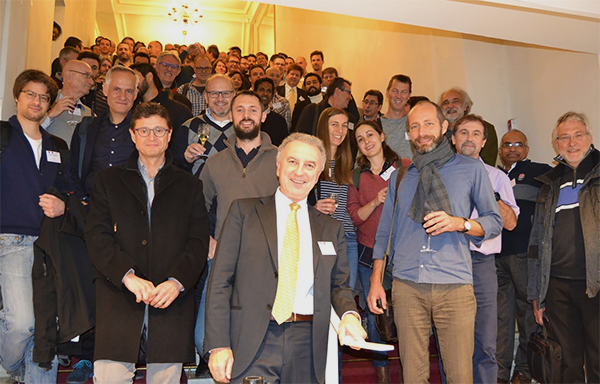![]() A year of successes for HL-LHC
A year of successes for HL-LHC
by Isabel Bejar Alonso (CERN)

180 HL-LHC project members participated to the 6th Annual Meeting in Paris from the 14th-16th November, co-organized with CEA at the “Espace Saint Martin” premises (Image: CERN, HL-LHC collaboration)
2016 has been a very busy year for the Hi-Luminosity team. In March, the HL-LHC was declared as an ESFRI landmark, and in June the project received the formal approval of the CERN Council. Finally, after an international review, the 2nd HL-LHC Cost and Schedule review took place in October; where a group of international experts scrutinized the status of the project. The reviewers gave very positive feedback and pointed out risks of which the management team were already aware.
On the technical side, it is difficult to determine the three main technical milestones of the project due to the sheer volume of achievements.
For Lucio Rossi, HL-LHC Project Leader, 2016 was the year of the consolidation of the civil engineering and technical infrastructure design. In particular, in 2016 we optimized the so called “double decker” solution, which was selected in summer 2015 as best solution for hosting the technical services that will feed the new insertion regions in a gallery a few meters above the main LHC tunnel.
This definitive design pushed to a re-baselining exercise which aimed to resolve the excess in civil engineering costs that emerged in spring 2016. The results of this exercise were presented and validated at the Cost and Schedule review after being approved by the CERN Executive Committee in August. The results have also been integrated into the latest version of the Technical Design Report (TDR), that will be published soon.
In addition, Lucio Rossi pointed that the HL-LHC technical teams have achieved many things, such as the production of full cross-section models of the HL-LHC’s future quadrupole magnets. The first short model (MQXFS1) of the future quadrupoles was produced by a collaboration between US-LARP and CERN. The magnets (MQXFS1) achieved the ultimate gradient and retained it after a thermal cycle showing an optimal memory. Had the magnet been a prototype rather than a model, would have been qualified for installation.
Furthermore, the SPS testing of the crab cavity cryo-assemblies has also made significant progress. After being considered in a critical state and with challenging planning just one year ago, the schedule is back on track and has been adhered to, without any further delay.
Beyond SPS testing, the industrialization plan for the HL-LHC production was validated by the external reviewers and considered extremely solid.
HL-LHC has had a successful year both in terms of project management and technical milestones. Project members gathered for the 6th HL-LHC Collaboration meeting held in Paris in November to discuss the past year and look forward to the next steps.
